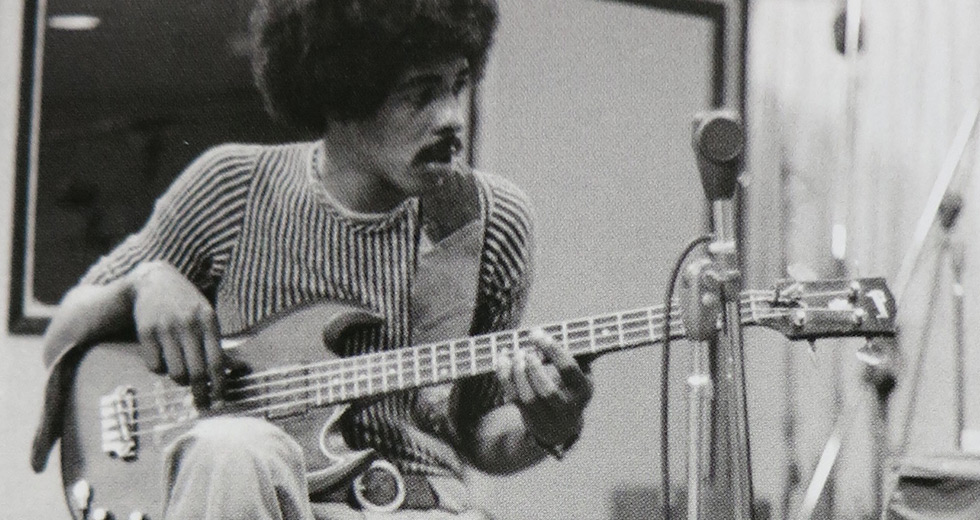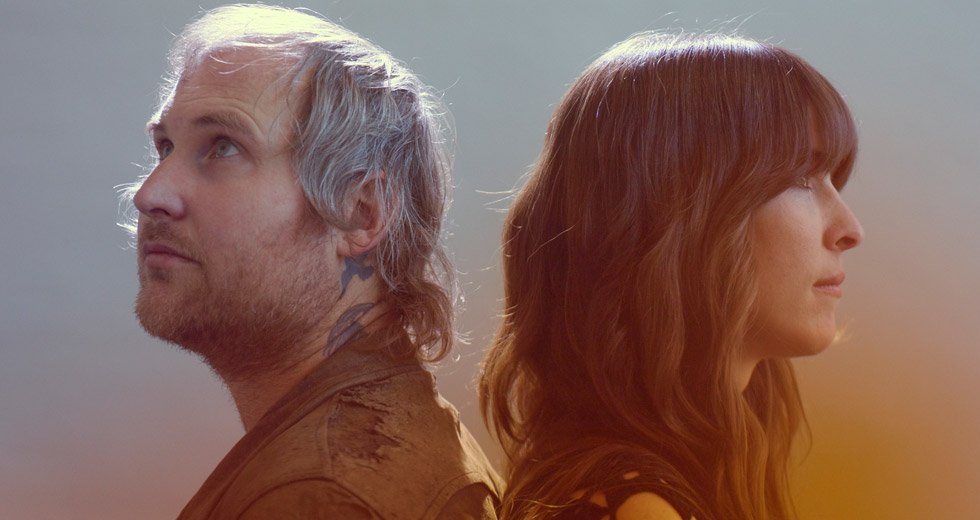New York Stories: Sal Principato
Liquid Liquid’s singer talks about the city in the early ’80s.

Our band (Scott Hartley, Richard McGuire and Dennis Young) had an apartment that people would move in and out of near the American Museum of Natural History. When I returned to the East Coast from San Francisco [in 1980], Scotty and Richard had graduated from Rutgers and moved into this place, and I came back to visit. I was writing music, but they were actually playing around town. I came back for a two-week vacation and it was like, “We have songs – before you go back let’s get a gig at CBGB.”
So we go to CBGB with our little cassette tape and give it to Hilly Kristal, and he gave us a gig. We were the fifth band on a three-band bill. It was so much fun [that] I never went back [to San Francisco], and that was the beginning of the band. It’s funny because when I came from the airport to 80th and Columbus, I’m like, “Oh damn, where are they living?” Because up there it used to be block to block – one block would be upscale and upper-middle class, and one block would be a drug block. There was a leather bar across the street [where] they made that Al Pacino film, Cruising. There were families and dealers [in the building] who had been there forever on the first two floors, and we were on the fifth floor, and we would practice there. We practiced there even when there were people living in the building, but then we started squatting and taking electricity from the hallway. Now just the thought of practicing in an apartment in the Upper West Side and not paying rent is mind-blowing.
In late 1982, we started working on our third EP, Optimo. We were primed to really make a definitive artistic statement. We were not particularly scenesters, [yet we were] aware of what was bubbling up around us. We were a self-contained entity looking outward for validation. So when we were given the opportunity to record our next record on the top floor of Radio City Music Hall, at what was formerly the studio for NBC Radio broadcasts, the band felt it had met its match.
We first performed “Optimo” some time in late ’81 or early ’82. We definitely played it when we went to play in Paris at the Rex Club in 1982, which was our first time in the country, and it was amazing. Before we went, we were at our wits’ end as to where we fit in the scheme of things, and in Paris it just all kind of clicked and gave us this crazy confidence. [The club] was packed. We did two nights in a row, and then they asked us back.
We never wrote a song where someone sat in a room the night before and said “Hey! I wrote this song – you do this, you do that.” It happened in a slow, organic, arduous process. I’m not sure if I remember the specific way that we wrote “Optimo,” but there were a couple ways we would write music. Songs didn’t totally come together until we were in the studio. We would smoke a little weed and just play and play until we came together on something. Get a groove, expand on that groove and then make a definitive arrangement out of it.
With “Optimo,” there were a bunch of spliced things. The whole thing with the opening drums, the cowbell coming in... I’m not sure that’s how it was originally played. It probably was more just a straightforward groove without the drop-ups and downs. I was probably hitting sticks or the cowbell, and Scotty was doing the rhythm on the cymbals, and I just followed it on cowbell. Same with Richard’s bass – he always puts in a solid bass line – and the marimba player just put colorings on it.
One thing about our material: it’s like an empty vessel that we poured emotion and excitement into.
One thing about our material: it’s like an empty vessel that we poured emotion and excitement into. The structures themselves and the songwriting weren’t necessarily sophisticated, but the way it’s presented and what we put into it makes it seem much more than it really is. So if you’re not catching the feel of it, it’s almost like there’s nothing there. It’s not like we have this great melody going on – I mean, occasionally we do, but it’s more the feeling behind it that made a difference.
We had to have a name for “Optimo,” and, at the time, it seemed like every cigar and newspaper stand had the Optimo logo. Like the Gem Spa on the corner of St. Mark’s and Second Avenue – they had egg creams too. But it was also something that very few people consciously registered unless you smoked cigars. It was a word that was almost hiding in plain sight.
The record was pretty much recorded live in the same room with portable sound walls between us so that there was some separation in order to do a proper mix. And because it was a former radio-broadcast studio, there were various sound-effects elements that we took advantage of – including a door in a frame which we slammed at the end of the track “Out.”
One of the more memorable moments of that session was when Dennis and I went out to pick up sandwiches for everybody. We took the Radio City freight elevator down to the street; at one point the elevator stopped and in comes a bevy of Rockettes in full regalia. I’m not the tallest man in the world, and it seemed I found myself in a forest of legs, as the dancers were all much taller and were wearing heels.
Before we were done recording, at the prompting of our producer and manager Ed Bahlman, we did some extended versions of tunes, especially “Cavern,” which looms large in our discography. Ed identified it as a dance track, so along with the other tracks on the EP it was edited by the engineer and finally mixed with everyone’s input.
One other important thing to mention is that Richard created a really beautiful cover for Optimo. I don’t know if iconic is the right word, but that is an evocative, catchy visual, unlike anything else at the time. It really stuck out in a record bin. People have told me that they bought the record because of the cover.

We decided to release four songs from the session: “Optimo,” “Cavern,” “Scrapper” and “Out.” Obviously, we thought “Optimo” was the main track, but as I mentioned Ed had different ideas. We made a mix of “Cavern” and he pressed an acetate of it. His brother Bill DJed at this bar called the Anvil and Ed would give him the latest versions to play to see what parts the boys responded to. Soon I was hearing it on the urban contemporary stations.
Nowadays, to play “Cavern” is very obvious – that’s probably one of the reasons contemporary DJs don’t play it. And “Optimo” was a great track. We named the record Optimo because we kind of thought that was the track.
Probably more people know about the Optimo party than actually know the song.
The first time we met [Keith McIvor and Jonnie Wilkes, aka JD Twitch and JG Wilkes, who run the Optimo Espacio party in Glasgow] is when they flew in for the reunion show Liquid Liquid played at the Knitting Factory in March of 2003. Liquid Liquid eventually played at the Optimo party in Glasgow. I do think it’s kind of a sweet thing they do, continuing the legacy, and not in a corny way that’s totally about us. Now it has a whole other meaning, and probably more people know about the Optimo party than actually know the song.
Our impact is really hard to measure. I run into people in the music scene now who have never heard of Liquid Liquid. I’ll be at a dinner party in New York City, there are ten people there and we’re all chatting, and they ask, “Oh what do you do?” I say, “I used to play in this band.” “Oh, what was the name of the band?” I’ll say Liquid Liquid, and eight of the ten faces will be absolutely blank, and the other two people will be like “Holy shit!!!” and go all fanboy.
A version of this article appeared in The Daily Note, a free daily newspaper distributed in New York during the 2013 Red Bull Music Academy.

